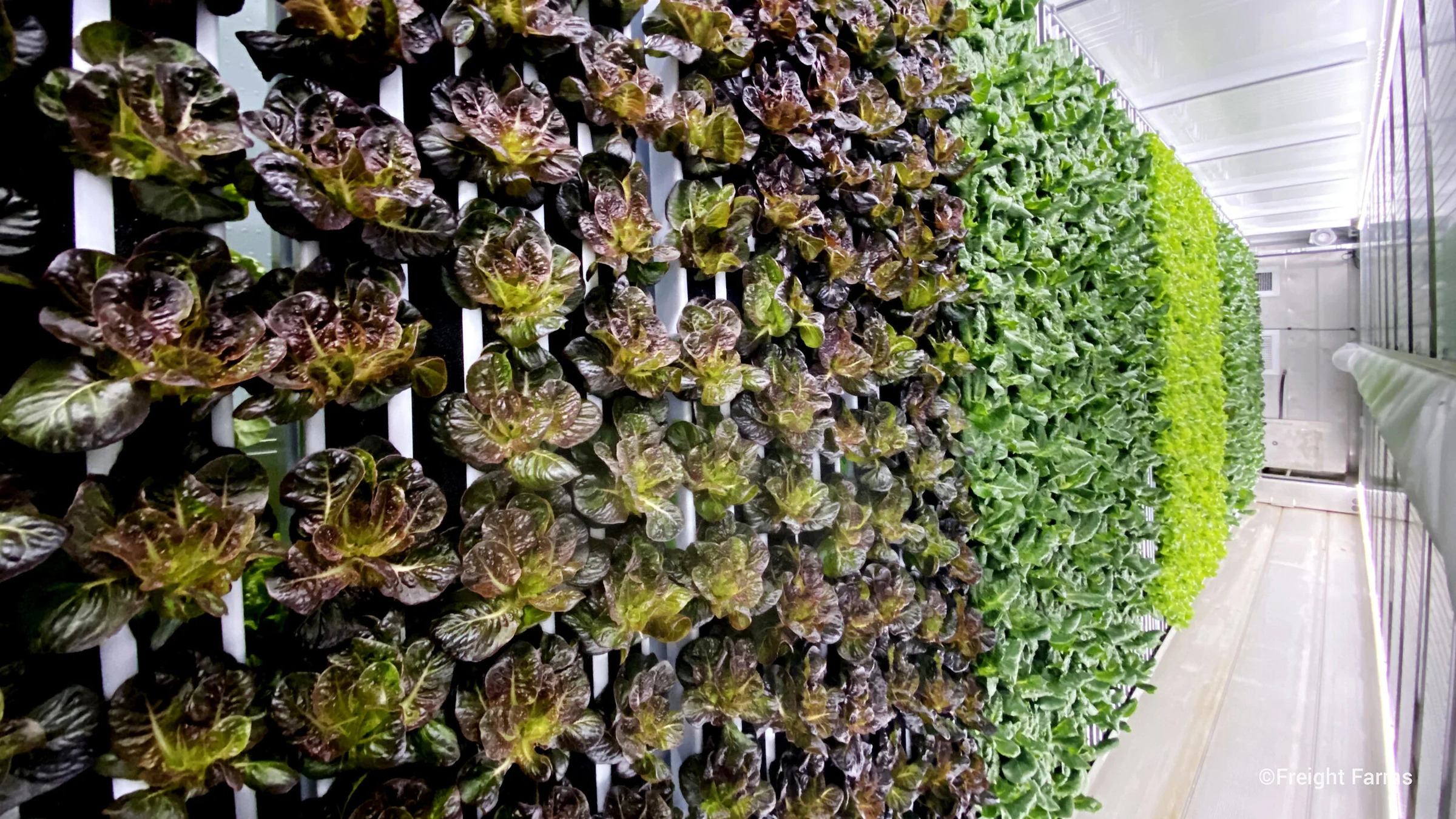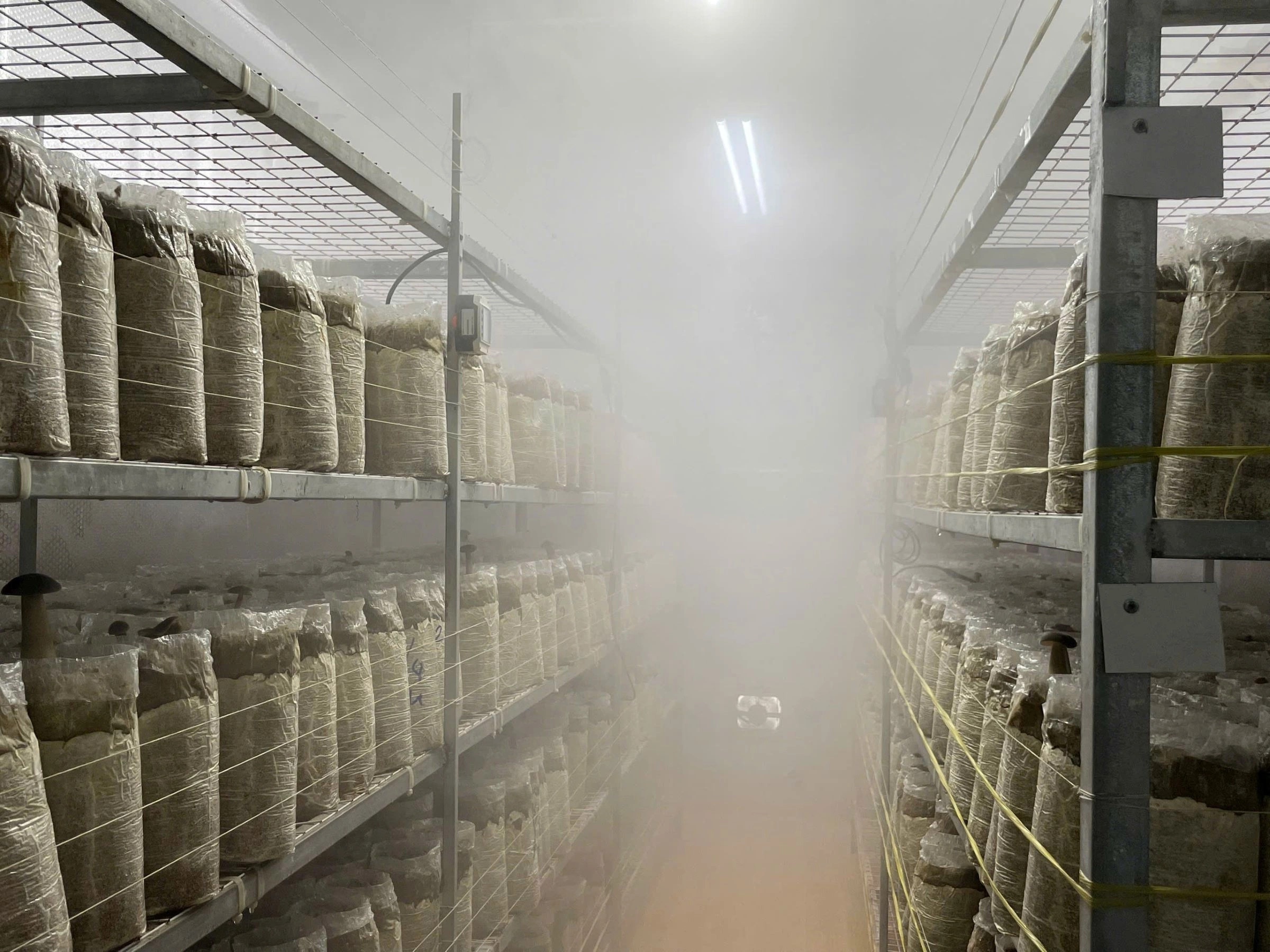This model, championed by Freight Farms (USA), can generate up to 100,000 USD in revenue per container annually. From the outside, these containers, stacked side-by-side, look like ordinary storage units. But inside, they house closed hydroponic systems, continuous LED lighting, and sensors monitoring humidity, nutrients, and temperature.
According to Freight Farms, each container can grow various crops like lettuce, kale, mushrooms, and edible flowers. The average yield per container reaches 2 to 6 tons per year. This closed-loop system recycles water and nutrients, saving up to 95% of water compared to traditional agriculture. Growing produce at the point of consumption also reduces transportation distances, thus lowering greenhouse gas emissions from logistics.
 |
Container farming model. Photo: Freight Farms |
Container farming model. Photo: Freight Farms
In Israel, Vertical Field employs a similar model, installing container farms within the premises of the country's largest supermarket chain, according to Vertical Farm Daily. The produce is grown in a sterile environment, without chemical pesticides or fertilizers. Sensor-controlled parameters ensure consistent yields. Crops like lettuce, basil, parsley, kale, mint, and others are sold at competitive prices due to reduced logistics costs.
The "vertical farming technology" market, including container farms, is experiencing rapid global growth. A report published by Grand View Research in late 2024 indicates that the global vertical farming market is projected to reach 24.95 billion USD by 2030. The compound annual growth rate (CAGR) is 20.9% from 2025 to 2030. This market growth is driven by factors such as population growth, limited arable land, and increasing demand for high-quality fresh produce. The Asia-Pacific region is predicted to have the fastest growth with a CAGR of 22.5%.
Among vertical farming types, containers hold over 51% of the market share, despite emerging after building-based models, according to Grand View Research. The report attributes this to the model's advantages: competitive costs for used containers and no need for land or permanent structures. Technological advancements and precise data control are expected to further boost the container segment in the future.
Globally, this model is gaining popularity, but it remains relatively new in Vietnam. Many experts believe containers could solve the problem of limited agricultural land in rapidly urbanizing cities while adapting to climate change. Each system requires about 30 square meters and can be placed in parking lots, vacant land, or warehouses within the city. On-site cultivation reduces reliance on long supply chains. This model also presents opportunities for agricultural cooperatives and high-tech agricultural startups.
Some farms and suppliers have entered the market in the past two to three years, but the scale remains limited. As a rare example in TP HCM, Tran Anh Tuan's farm has dedicated about 120 square meters to two containers for growing black oyster mushrooms for the past two years. The containers utilize IoT, with temperature control systems maintaining 22-24 degrees Celsius and misting systems ensuring 80-90% humidity, ideal for the mushrooms' growth.
 |
Misting system maintaining humidity in a mushroom container farm in TP HCM. Photo: Ha An |
Misting system maintaining humidity in a mushroom container farm in TP HCM. Photo: Ha An
According to the farm representative, each container can accommodate 2,300 mushroom bags, each yielding about 200-220 grams of fresh mushrooms, for a total harvest of around 500 kg. The initial investment for infrastructure and the IoT system was about 200 million dong, excluding the cost of mushroom spawn. With the average price of fresh black oyster mushrooms at around 170,000 dong per kg, each harvest cycle (over two months) yields 86 million dong. After deducting all expenses, each container can generate a profit of nearly 40 million dong.
A business operating in an industrial zone in Dong Nai has also adopted this model to grow clean vegetables, providing meals for over 3,000 workers and reducing reliance on external suppliers.
Experts point out that investing in this model still faces challenges. The primary hurdle is the cost of hundreds of millions of dong per container. Finding personnel with the technical expertise to operate the systems is also difficult for small farms and cooperatives. Based on the experience of international companies, the model should be developed through cooperation and profit-sharing. Established businesses can provide technical and infrastructural support to those in need, sharing profits based on revenue.
In the long term, quality control support and connections to retail chains and industrial zones can be established for these products. Many countries have implemented such policies to encourage the development of high-tech urban agriculture.
Hoai Phuong












